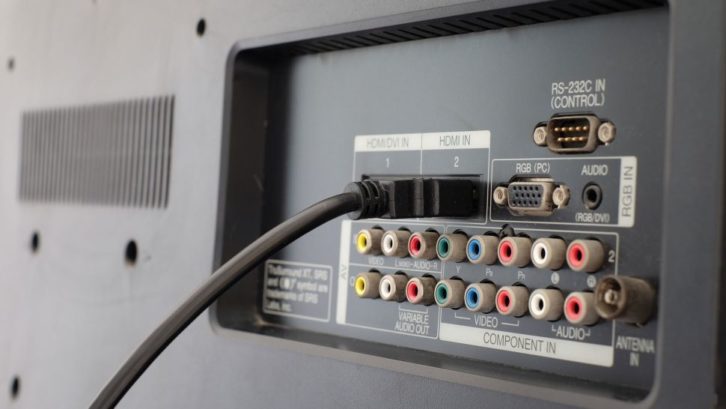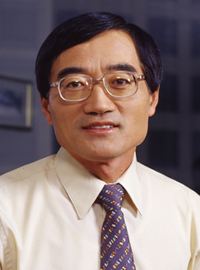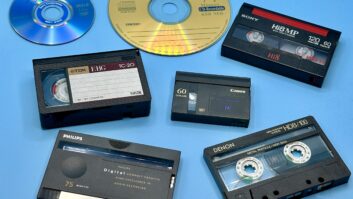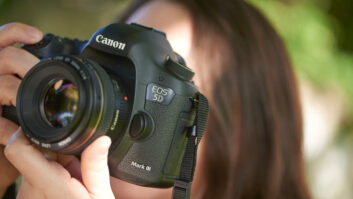
This year marks the 100th anniversary of the founding of the CTA (Consumer Technology Association), which started out as the RMA (Radio Manufacturers Association). This is the fifth in a series of essays exploring and celebrating CTA’s and our industry’s first century of invention, innovation, and entrepreneurship, assembled from varying technology historical research and writings I have done over the course of 20-plus years, including from an annually updated industry history for CTA’s now-defunct Digital America, 20-plus years of CTA Hall of Fame inductee biographies, and numerous tech history articles for a variety of publications over the years.
Here are the previous chapters:
- Part 1 (1924-1929): Founding
- Herbert H. Frost: CTA’s “George Washington”
- Part 2 (1930-1945): David Sarnoff
- Part 3 (1946-1960): The TV Age
- Part 4 (1961-1974): The Sixties
- Jack Wayman, Our Industry’s Indispensable Exec
- Part 5a (1975-1985): Decade of Disruption – Home Video
- Part 5b (1975-1985): Decade of Disruption – Personal Audio
- Part 5c (1975-1985): Decade of Disruption – Personal Computing
- Part 5d (1975-1985): A Decade of Disruption – 1984 Phones It In
- Part 5e (1975-1985): A Decade of Disruption – 1984, The Sony Decision
- Part 6a (1985-2000): Platform Wars – Recording Media
- Part 6b (1985-2000): Platform Wars – Video Games
- Part 6c: Platform Wars – Airways (Part I)
- Part 6c (1985-2000): Platform Wars – Airways (Part II)
- Part 6d (1985-2000): Platform Wars – Compression
- Part 6e (1986-2000): Platform Wars – Digital Photography
- Part 6f (1985-2000): Platform Wars – DVD
 As with the last chapter on DVD, what follows is an updated and compacted version of a history of HDTV I wrote in 2003 for a now-defunct magazine called HDTV Etc. I don’t think the company that published that magazine still exists, so I feel free to plagiarize my own previously published HDTV history.
As with the last chapter on DVD, what follows is an updated and compacted version of a history of HDTV I wrote in 2003 for a now-defunct magazine called HDTV Etc. I don’t think the company that published that magazine still exists, so I feel free to plagiarize my own previously published HDTV history.
Everyone watching modern TV – 2K standard HDTV, 4K, and 8K – is watching a bona fide miracle.
That’s because every version of today’s high-definition TV exists in spite of, not the result of, a cacophony of constantly conflicting constituencies wider and more at odds than the conflicting DVD camps.
Every national legislative body in the U.S., Europe, and Asia, U.S. government rule-making and oversight agencies, Congressional committees, TV and computer equipment manufacturing and broadcasting trade associations, corporate partnerships and alliances, and individual companies that now actively sell HDTVs were, at one time or another during the last 15 years of the last century actively working not only against some aspect of a unified HDTV format but against each other.
Believe it or not, what got the HDTV snowball rolling was something that had nothing to do with HDTV: the spectrum demands of the growing cellular phone business, along with the usual potent combination of greed and jingoism that triggered all platform wars.
Save Our Spectrum
 The official TV display in Target
The official TV display in Target
According to Joel Brinkley, author of the excellent 1997 HDTV history, “Defining Vision: The Battle for the Future of Television,” the whole HDTV race started as an attempt by TV broadcasters to hold on to spectrum: portions of the public radio frequencies assigned to particular broadcasting uses.
Analog television requires 6 MHz of spectrum per channel. HDTV entailed doubling the number of lines in an analog NTSC picture, requiring an additional 6 MHz of spectrum. The broadcasters already used this spectrum to avoid interference between channels.
In the early 1970s, the broadcasting industry lost a swath of spectrum in the upper UHF band to what is called “land mobile” – two-way point-to-point wireless communications, such as emergency radio services, commercial and industrial radios, along with what would become the spectrum used by the first cell phones and pagers.
In the mid-1980s, Motorola led the charge for more wireless cellular spectrum. The National Association of Broadcasters (NAB) was desperate to hold off another land mobile spectrum grab. Broadcasters complained that wireless traffic so close to TV channels would cause static and interference, driving more people to cable. But these arguments were futile in the face of Motorola’s legitimate claims that spectrum was desperately needed in an increasingly mobile and wireless society.
The NAB needed a pressing need of its own to keep its spectrum. What about high-definition television?
In 1981, Japan’s NHK demonstrated an analog 1125-line HDTV system at a San Francisco engineering convention. This demonstration prompted several American organizations to begin exploring home-grown HDTV systems.
 In 1982, the Advanced Television Systems Committee (ATSC) was established by several companies to develop voluntary standards for advanced television systems. AT&T’s Bell Labs, RCA and its Sarnoff Research Center, MIT, and Zenith all started internal advanced television research. In 1983, NBC, CBS, ABC, PBS, Zenith, General Instruments, HBO, and several TV manufacturing companies contributed $100,000 each to MIT’s Center for Advanced Television Studies (CATS).
In 1982, the Advanced Television Systems Committee (ATSC) was established by several companies to develop voluntary standards for advanced television systems. AT&T’s Bell Labs, RCA and its Sarnoff Research Center, MIT, and Zenith all started internal advanced television research. In 1983, NBC, CBS, ABC, PBS, Zenith, General Instruments, HBO, and several TV manufacturing companies contributed $100,000 each to MIT’s Center for Advanced Television Studies (CATS).
But NHK’s MUSE (multiple sub-Nyquist sampling encoding) was the only working HDTV system extant. So the NAB invited the Japanese to give a public demonstration of MUSE in Washington, D.C., on January 7, 1987 – and it was spectacular.
MUSE’s impressive NAB demo didn’t make people in Washington happy. Japan had already co-opted most of America’s hegemony in consumer electronics and automobiles. NHK’s NAB demo sparked a wave of patriotic paranoia that with a Japanese HDTV standard America would lose even more technological ground along with the potent economic benefits of a home-grown HDTV industry. Great pressure was put on American companies to come up with an American HDTV standard to rival and supplant the Japanese.
NAB’s arguments that the spectrum land mobile desired would be better used by broadcasters for HDTV, now buttressed by the threat of a Japanese HDTV monopoly, worked. In April 1987, the FCC decided not to reallocate the additional spectrum to land mobile.
Wiley

The FCC didn’t stop at this passive stance, however. A few months later, the FCC created ACATS – the Advisory Committee on Advanced Television Service – headed by former FCC chair Richard E. “Dick” Wiley.
Like Sony suit lead attorney Dean Dunlavey, Wiley also was a lawyer who deeply influenced our technology world because, like IBM’s Dr. Allen Bell during the DVD platform war, he would become the independent arbiter of the HDTV platform battle.
Wiley was born in Peoria, Illinois, on July 20, 1934, and his family lived primarily in suburban Chicago. Wiley got his introduction to TV when his father, Joseph, a manufacturer’s agent for Edison electronics products, bought the family a Philco set in the early 1950s.
While in college, Wiley planned to become a history and political science teacher when a professor suggested he take the LSAT and pursue a law career. After passing the test, Wiley got a full scholarship to Northwestern. After receiving both his B.S. and J.D. from Northwestern, Wiley married, then joined the Army and served in the Judge Advocate’s Corp as an appellate specialist at the Pentagon from 1959-1962. He then earned his LL.M. from Georgetown in 1962.
Interested in regulatory regulation, Wiley got his first job in the private sector at a Chicago firm with a large anti-trust specialty. He practiced successfully for eight years when he traveled to Washington, D.C., to apply for the job as FTC general counsel. That job wasn’t open, however, but he was told the same position at the FCC would be open a few months later. In October 1970, he got the FCC job. Two years later, President Richard Nixon nominated Wiley to a term as an FCC commissioner and, in 1974, was appointed chairman. Wiley served under three presidents – Nixon, Ford, and Carter – during his tenure on the FCC.
As chairman, Wiley believed that competition fostered innovation and worked to open heretofore closed industries. He was instrumental in opening both the landline telephone and the nascent cellphone businesses to multiple carriers, allowing both industries to explode after the breakup of AT&T in 1984, and helped birth the modern satellite and cable TV businesses. Wiley retired as chairman in October 1977.
From the late 1960s through the early 1980s, Wiley occupied a front-row seat as wireless telephone companies led by Motorola petitioned the FCC to make more spectrum available, spectrum sliced from local television spectrum. This experience and expertise led the FCC to ask Wiley to chair ACATS.
Wiley and ACATS declared an open competition for the creation of an American HDTV system, which set off a worldwide competition. In all, ACATS received 23 proposals for HDTV systems.
The race to crown a U.S. government-approved HDTV standard was on.
HDTV Contenders

For most of the 1980s, the various advanced television and HDTV research and development efforts barely rose above the status of interesting experimentation. But now the FCC gave these tinkerings a reality check that the engineers were barely able to face.
Whiz kids at AT&T’s Bell Labs, RCA and the Sarnoff Lab, Zenith, MIT, and varying other labs suddenly exploded into a whirl of competitive energy, working against time and each other to come up with a workable winning system. They were all faced with the first hurdle, a winnowing process that ACATS had set up for that would become known as “Hell Week.”
From November 14 through 18, 1988, proponents of each of the 23 proposals sweated through grillings from the committee. It soon became obvious which were workable, and which were not. After the smoke cleared, there remained only four viable contenders:
- NHK’s MUSE, now known as Narrow-MUSE, was a variation of the same analog interlaced system demonstrated a year earlier. MUSE’s original 1125-line signal was converted to a 750-line signal to fit into the U.S. 6 MHz channel space. But MUSE wasn’t American. Even the NAB, sensing the direction of the prevailing political winds, would abandon its early HDTV partner.
- RCA and its Sarnoff Labs were working on an analog-enhanced TV system called ACTV (Advanced Compatible Television). Ironically, however, this seemingly American entry was no longer American. In December 1985, RCA, the company that had practically invented television, color television, and the NTSC standard, had been sold to GE. GE kept NBC but sold RCA’s consumer brand to France’s Thomson Consumer Electronics. The Sarnoff Lab was essentially given to SRI International
- MIT Media Lab’s Center for Advanced Television Studies (CATS), a research lab that was funded by several television-related companies, didn’t have an actual system but had patented more than a dozen HDTV-enabling technologies.
- Zenith, which, along with RCA, was the furthest along in developing a working HDTV system. But Zenith was in deep financial trouble and hoped that HDTV would revitalize its fortunes.
 While the pretenders were weeded out by the “Hell Week” process, it was clear that each of the survivors had a great deal of work to do – and do it fast. ACATS declared that working systems would undergo evaluation in early 1990 at the newly established Advanced Television Test Center (ATTC) being built in Alexandria, VA.
While the pretenders were weeded out by the “Hell Week” process, it was clear that each of the survivors had a great deal of work to do – and do it fast. ACATS declared that working systems would undergo evaluation in early 1990 at the newly established Advanced Television Test Center (ATTC) being built in Alexandria, VA.
Zenith, for one, realized it needed help. In early 1989, the company signed a co-development deal with AT&T’s Bell Labs, the most prolific and honored research lab in the world, to help it design a partly digital TV system. Almost from the start, there was friction. Brinkley reports that the engineers at the prestigious Bell Labs began to feel resentful at being junior partners, and Zenith engineers fumed at Bell’s inability to think about consumer product realities.
A year later, RCA, Sarnoff Labs, Philips, and NBC joined forces in the Advanced Television Research Consortium (ATRC) to develop its own digital HDTV system.
As the evaluation deadline loomed, these two efforts battled each other in the trade press and in dueling demonstrations.
The Big Squeeze

While politicians, engineers, and corporate executives battled for HDTV supremacy on the East Coast, Woo Paik, an engineer at the California-based cable converter company General Instrument who I profiled in Part 6d: Platform Wars – Compression (linked above), was charged with developing a digital high-definition signal for satellite TV.
Paik didn’t realize the job was thought to be impossible. At a 1989 broadcasting conference, Joe Flaherty, CBS’s legendary senior vice president for technology, infamously declared “We’ll have digital television the same day we have an antigravity machine.” A year later, Flaherty stated in The Economist that digital television “defies the laws of physics.”
Flaherty wasn’t talking through his hat. The Bell Labs side of the Zenith-AT&T partnership thought digital was the way to go, and so did the Sarnoff engineers working on the ATRC system, and an old MIT classmate of Paik’s, Jae Lim, now running MIT’s CATS effort. But while digital was desired, no one could figure out how to compress the elephantine digital television signal by 90 percent so it could fit through an eye-of-a-needle-sized 6 MHz channel.
Paik, aided by recent MIT graduate Ed Krauss, faced only half that challenge since satellite had twice the bandwidth of broadcast television. In about a year of quietly working on this engineering Rubik’s Cube (and simultaneous with the development of MPEG), the pair successfully compressed the Tom Cruise actioner Top Gun so it could be digitally transmitted. Once the wider satellite solution had been found, the pair began work to adapt their digital compression algorithms for slimmer cable TV channels and, eventually, broadcast HDTV.
But Paik and GI, working on their own set of satellite and cable TV issues, weren’t part of the HDTV race.
By this time, engineers at both MIT and the Zenith-Bell Labs partnership had worked their way toward partially digital advanced television systems that weren’t quite HDTV. RCA heard of Paik’s success and, knowing that MIT and Zenith were ahead of them, attempted to form a partnership with GI in March 1990. But tiny GI thought the RCA behemoth would simply swallow them and its system, and turned down the offer. In April, digital naysayer Joe Flaherty visited Paik’s San Diego labs for a demo. Impressed, he let GI know about the FCC HDTV race.
On May 31, 1990, GI announced itself as a contender when it publicly demonstrated its digital HDTV DigiCipher converter, catching the FCC and the entire industry off-guard.
Choosing Sides and Systems
The question was, however, what was HDTV, exactly?
In Wiley’s eyes, “true” HDTV was twice the resolution of current television. With this definition in mind, Wiley made three critical pronouncements.
First, Wiley declared that only this “true” HDTV standard would be accepted as the U.S. format, not simply an “enhanced” TV system.
Second, the HDTV system had to use simulcasting – one 6 MHz channel dedicated to HDTV and a second 6 MHz channel for conventional broadcasting – to ease the transition from analog to digital.
Finally, the new system had to be based on “new technologies” – which, in the wake of DigiCipher, everyone knew meant digital.
Except none of the systems in feverish development fit all three of these criteria.
Wiley also announced that the ATTC would begin physical evaluations of the various systems starting in July 1991. Each entrant would have to bring their gear down to the new ATTC labs for eight weeks of testing. Lots were drawn for the all-important testing order. RCA’s analog ACTV system would go first, followed by NHK and Narrow MUSE, followed by GI, then the Sarnoff-Philips ATRC system, then Zenith-Bell Labs, followed by MIT.
Wiley’s three criteria and the testing order forced some entrants to rethink their positions. Zenith had “fired” Bell Labs that May. But in the face of the DigiCipher announcement and the looming test date, the two partners reluctantly kissed and made up in October 1990.
And even though GI had the upper hand on digital compression, it had no complementary transmission technology. In January 1991, Woo Paik and Jae Lim became mates once again when GI and MIT formed a partnership. More importantly, GI now inherited MIT’s final testing slot, giving the new partnership a whole year to come up with a complete system, much to the dismay and anger of the other entrants.
The Tests

The ATTC tests began in July 1991 beginning with RCA’s analog “enhanced” ACTV system. When its tests ended in September, it was clear ACTV was dead. NHK’s Narrow MUSE was next, but the results were not even as impressive as the original MUSE NAB demonstration four years earlier.
On November 26, GI showed up in Virginia with the first complete digital high-definition television system, a 1050-line interlaced system, complete with a transmission system built by Paik during the previous 10 months. It worked to near perfection. On March 23, 1992, GI followed its triumphal ATTC results with a public demonstration of its DigiCipher I system at the Capitol Building in Washington to an amazed crowd of Congressmen, FCC commissioners, and journalists.
The Zenith-Bell engineers were unimpressed since the GI system entailed only a seven-mile transmission. But the Zenith-Bell system wasn’t exactly ready for its close-up, either. After several delays and some controversy about re-testing to replace a misplaced chip, the Zenith-Bell 787.5-line progressive scan system was performed, but neither was GI’s interlaced system. Nevertheless, Zenith-Bell set up a public demo of its own in May 1992 of what it called the first true long-distance HDTV broadcast, a 75-mile transmission between Milwaukee and Chicago. Like GI’s Washington demonstration, Zenith-Bell’s system performed to great acclaim.
The RCA-Philips consortium followed this test-public demo game plan. On June 22, RCA moved its 14 barely finished ATRC electronics cabinets – compared to GI’s two – into the ATTC labs for testing. Following less-than-spectacular results, RCA held its own less-than-impressive long-distance broadcast demonstration in Washington, D.C.
On August 28, evaluation began on the combined GI-MIT system, a 787.5-line progressive scan system, which also failed to live up to expectations.
But all this public HDTV Sturm und Drang signified nothing. By the time Bill Clinton was inaugurated as U.S. president on January 20, 1993, the FCC wasn’t even close to choosing an HDTV winner. In fact, Wiley had decided that none of the systems were up to snuff and proposed that re-tests be held, much to the dismay of the contestants.
Next week: HDTV Part 2 and the formation of the Grand Alliance.













